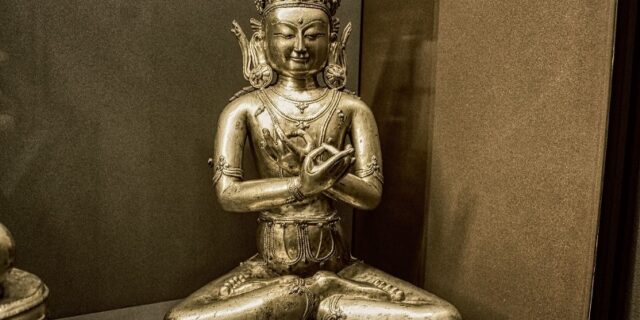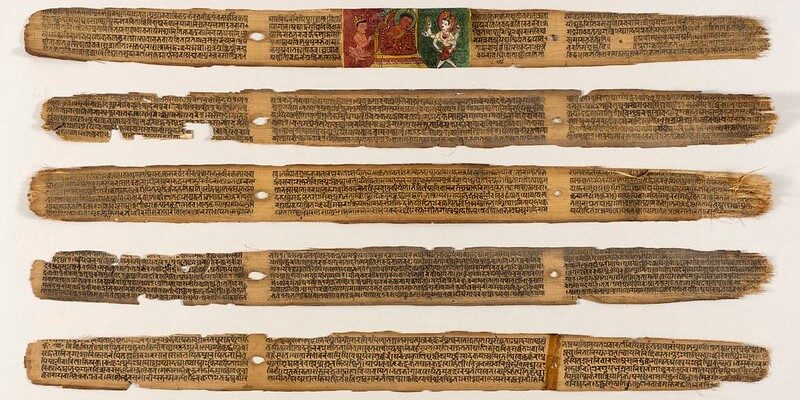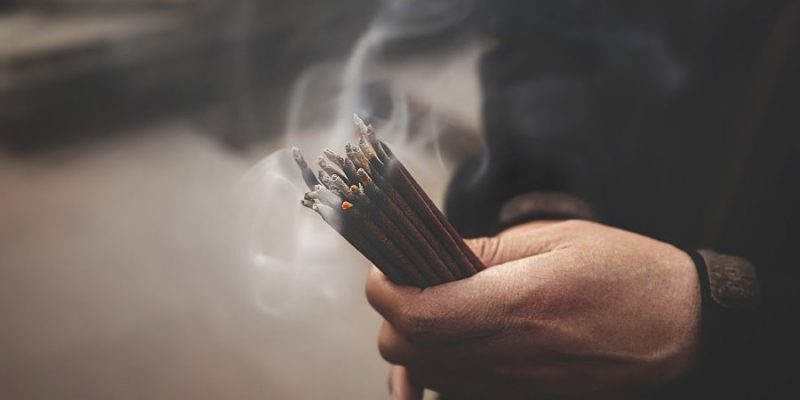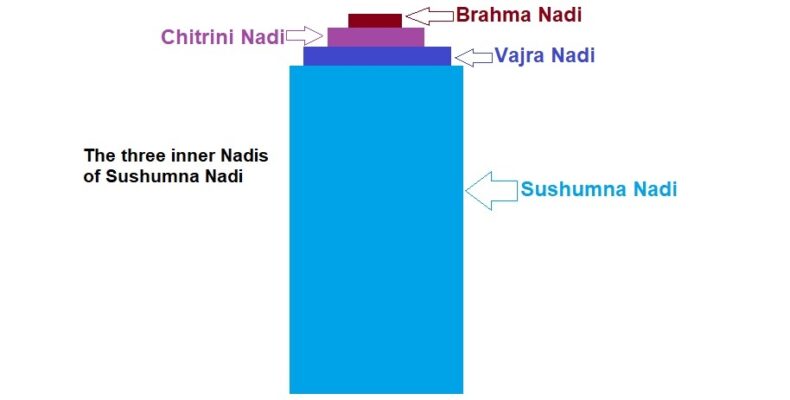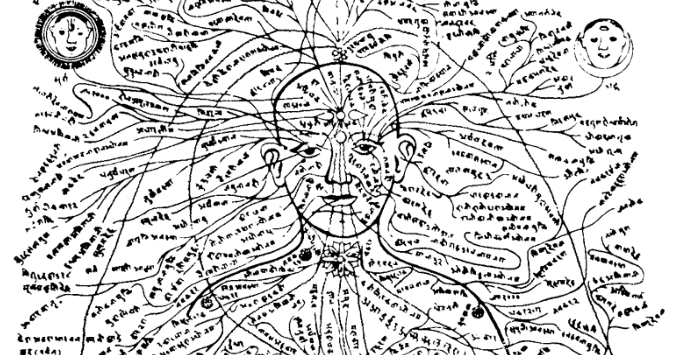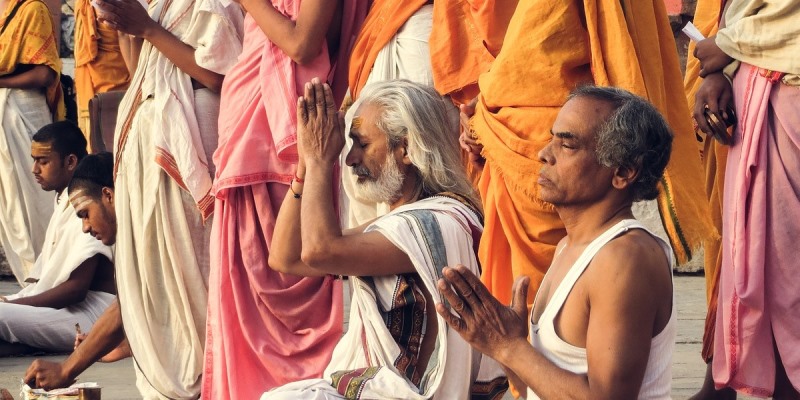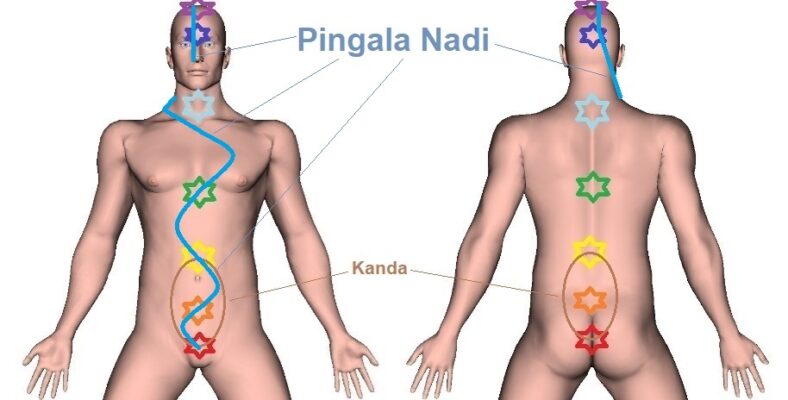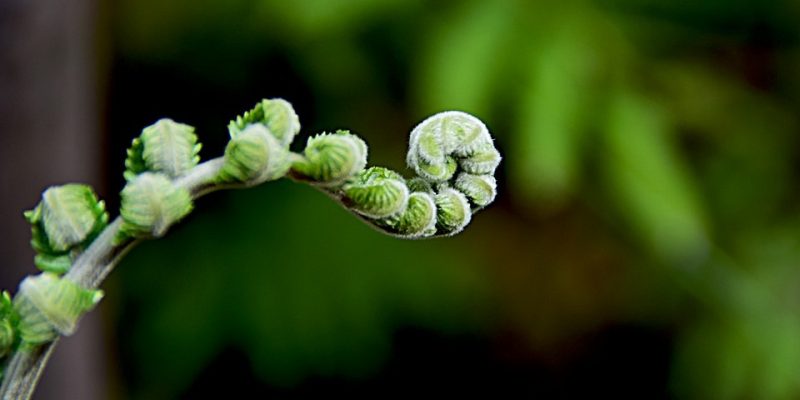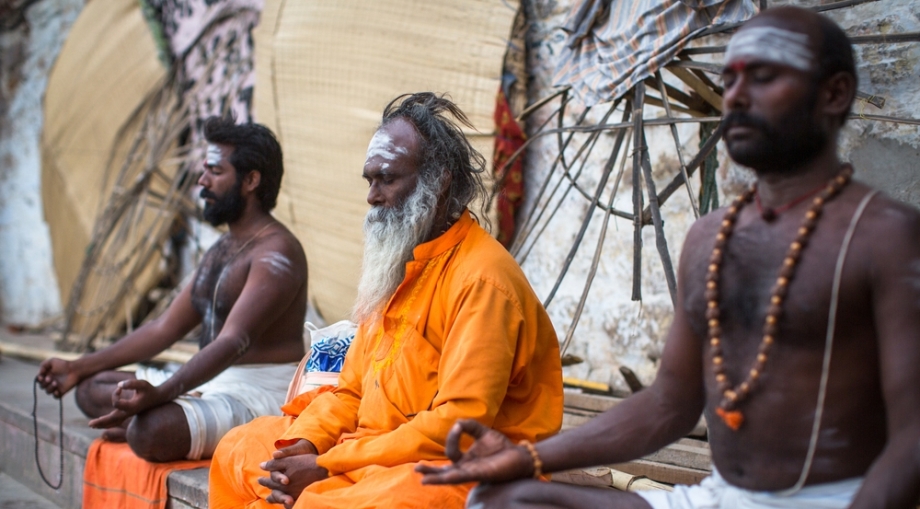
In Yogic circles, the three principal Nadis Ida, Pingala and Sushumna Nadi — the Trividha Nadis — are often referred to in relation to one’s spiritual awakening.
As it is, not only today, but for centuries the classical Yoga scriptures have emphasized working with the three major Nadis (Prana Energy Channels) and Prana Vital Force as a primordial way to attaining Spiritual Enlightenment.
Tantra and Kundalini Awakening
Although the Trividha Nadis have since long played a role in Vedic and Yogic spiritual practices, the rise of Tantra and Tantric practices in India as from 500 CE saw the core ideas around working with these Nadis shifting to activating so-called Kundalini Energy i.e. Kundalini Awakening.

Later, the active practice with Kundalini Energy was also adopted in Hatha Yoga, while at the same time becoming a more mainstream thought in Hinduism. Today, it’s a well-accepted concept and practice in modern Indian spirituality, and within the New-Age and Neo-Tantra movements.
Tantric work with the Nadis aims at balancing the complementary Ida Nadi and Pingala Nadi channels as a prerequisite to be able to direct Kundalini Vital Energy (the feminine, Shakti form of Prana) into the Sushumna Nadi central channel.
The goal hereof is to make Kundalini Energy flow up along the spine, pass through the Chakras, to finally reach the Crown Chakra at the top of the head, which supposedly can result in the Divine Union of Shakti Energy and Shiva Energy (the masculine form of Prana), union with the Cosmic Energy, and subsequently Spiritual Liberation.
In itself this isn’t just a one-time occasion, but a practice that aims at creating a continuing flux of Prana through the entire length of Sushumna Nadi, from its start in the Kanda up to the Crown Chakra (Sahasrara chakra). This doesn’t only opens up the possibility to enter the Samadhi state, it’s also believed to nurture a healthier body and mind.
Activating and Working with Ida, Pingala, and Sushumna Nadi
At any rate, Ida Nadi and Pingala Nadi are considered opposite but complementary Prana Energy Channels that sustain the necessary duality and balance in life, but which need to be overcome i.e. transcended into a state of non-duality if we want to experience the true Nature of our inner Self.
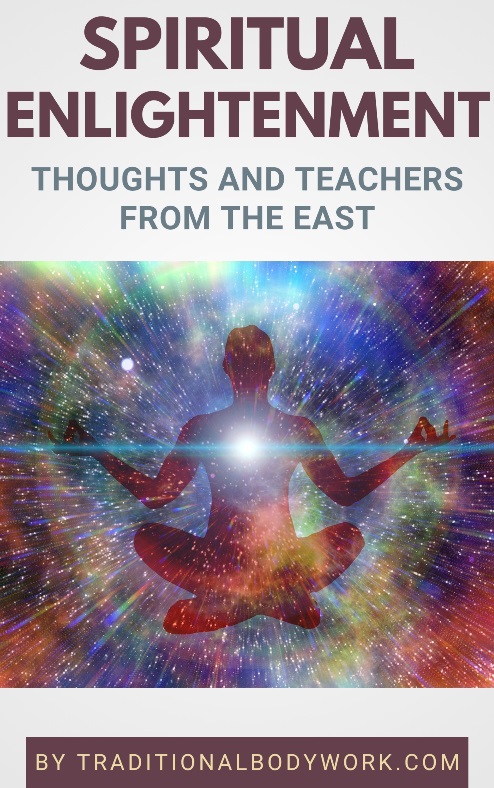
Sushumna Nadi in particular represents the balance between Ida and Pingala, being the non-dual Prana channel, the one with no properties other than being a inexpressible void of bliss, peace, joy, absolute awareness, and higher truth, only becoming fully active when Ida and Pingala are in equilibrium.
The three major Nadis represent three interconnected forces, each having different interrelated properties, characteristics, or energies. You will often see that Ida, Pingala, and Sushumna are compared to having qualities like passive, active, and neutral; female, male, and unspecified; lunar, solar, undefined; Shakti, Shiva, and Brahma; subjective, objective, non-dual; and so on.
The idea of “balancing the Ida and Pingala Nadis” means that the channels are clean and open, that Prana and breath flow through them freely, fully, and in equal proportions — neither Ida or Pingala being dominant — as such harmoniously activating and maintaining all processes and functions of our body, mind, and spirit.
It also means that the Ida, Pingala, and Sushumna Nadis become “fully connected” at the Mukta Triveni Point (which is at the location of the Third Eye Chakra, between the eyebrows), the Yukta Triveni Point (which is in the Kanda below the navel), and at the intersections with the primary Chakras, allowing for full Prana circulation and exchange.
To achieve the above, Yoga boasts many techniques to practically purify, open, activate, and balance the Nadis. Think of meditating on the Chakras, Marma Points massage, exercises, performing Asanas, Pranayama breathing exercises, carrying out Bandhas and Mudras, chanting, and prayers, to name some of the most used practices.







